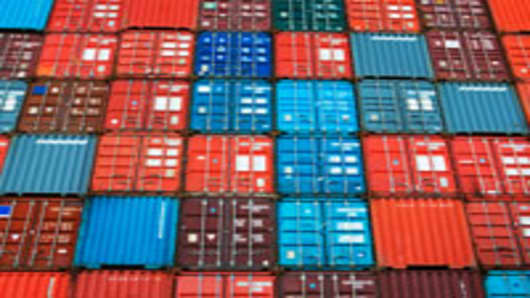Are this week's numbers from Taiwan showing a double-digit rise in September exports something to get excited about? Taiwan’s trade data, after all, are widely regarded as a leading indicator of the health of the world economy.
Taiwan, among the first Asian countries to release monthly data, said on Monday September exports rose 10.4 percent from a year earlier, ending a streak of six consecutive monthly falls.
The data followed better-than-expected trade figures from South Korea, which reported last week that exports fell by a smaller-than-expected margin of 1.8 percent in September to $45.66 billion from a year earlier, with exports to China rising 1.1 percent.
One month’s data may not mark the start of a trend, but for some economists the numbers at least give some hope that a dismal environment for exports may be abating.
“The Taiwan data is particularly interesting because it leads to the question of whether we are at the cusp of a turning point,” said Vishnu Varathan, market economist at Mizuho Corporate Bank. “It’s hard to raise a solid conclusion from the data but they do raise some hope.”
Taiwan’s exports to key U.S. and China markets returned to growth last month, bolstered by demand ahead of Christmas. The finance ministry on Monday said it expected exports to rebound in the fourth quarter as the outlook for the world economy improves.
“The Taiwan export numbers are certainly a surprise and they do suggest that the beginning of stabilization is starting to take place in Asia, but it is still too early to say we are seeing a rebound,” said Frederic Neumann, co-head of Asian economics research at HSBC.
Exports from Asia, the world’s manufacturing hub and viewed by economists as a bellwether of the global economy, have been hit this year by a sluggish global economy and the euro debt crisisthat have dented confidence, spending and in turn demand for foreign goods.
Watch New Orders
For Neumann, the indicator that gives the clearest gauge of the health of Asia’s exports are new the orders — a component of the Purchasing Managers’ Index (PMI) — particularly from Taiwan, South Korea and Singapore, the three economies most sensitive to the global export cycle. (Read More: Why Asia Should Start Worrying About Inflation?)
And these numbers haven’t been encouraging. Taiwan’s PMI, released earlier this month, showed September new export orders fell at their steepest rate since last November. It was a similar picture in South Korea, where the PMI hit its lowest level in more than three years in September, with new export orders falling.
“I want to see new orders in these countries turn up before I call for a rebound in exports. It will be slowing going into year-end, but we should see a big nice bounce going into 2013 as stimulus takes effect,” Neumann said.
Major central banks around the world have boosted their economies with either rate cuts or stimulus measures in the past month and further steps are expected to follow. South Korea’s central bank, which has held its monetary policy steady since July, is expected to deliver a quarter point rate cut on Thursday.
“We have gone through a couple of quarters without much on the policy front; not just in China but elsewhere in Asia and we’re scratching our heads a little about that,” Paul Gruenwald, Chief Economist, Asia Pacific at ANZ Bank told CNBC Asia’s “Squawk Box.”
Any economic stimulus from China would certainly lift the outlook for Asian exports, analysts added.
“I’m still waiting for more signs before the export picture improves — for instance sustained U.S. consumer demand. We’re still also waiting for China stimulus,” said Mizuho’s Varathan. “What we can say is that the export outlook is somewhat less dismal than what we have seen.”
—By CNBC’s Dhara Ranasinghe


